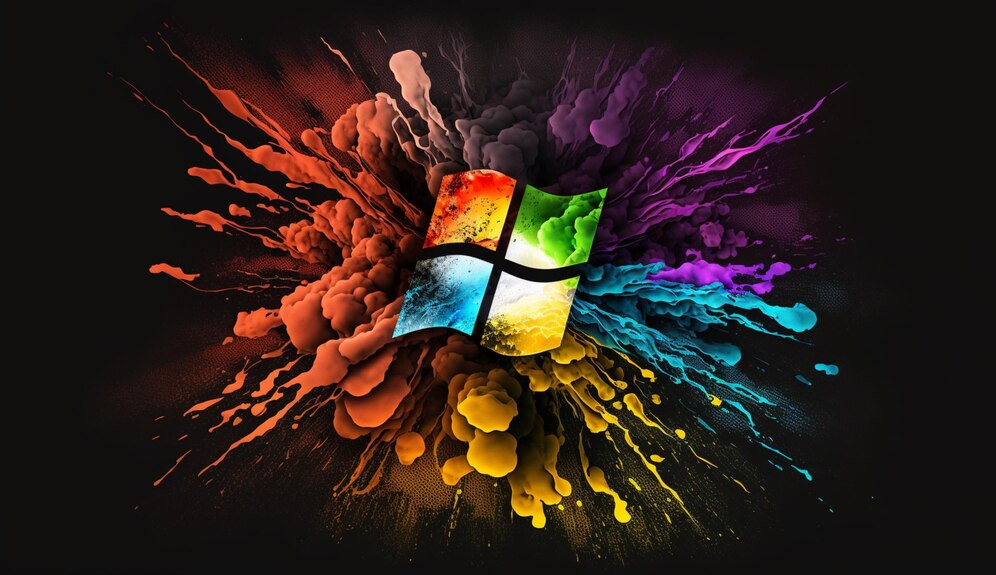
Microsoft Corporation, founded in 1975 by Bill Gates and Paul Allen, has grown from a small software company into one of the world’s leading technology giants. This article explores Microsoft’s evolution, key products and services, its impact on technology and society, as well as its future directions.

Microsoft: Transforming Technology and Empowering Innovation
1. The Early Years and Evolution
on April 4, 1975 the Microsoft began as a software company specializing in operating systems for personal computers. Its breakthrough came with MS-DOS, followed by the iconic Windows operating system, which revolutionized computing by providing a user-friendly graphical interface. Over the decades, Microsoft expanded its product portfolio to include software applications, developer tools, cloud computing services, and hardware devices.
2. The 5 Key Products and Services
- Windows Operating System: Continuously evolving since its launch in 1985, Windows remains a cornerstone of Microsoft’s product lineup, powering millions of devices worldwide.
- Office Productivity Suite: Microsoft Office, including applications like Word, Excel, and PowerPoint, has become essential tools for business productivity, communication, and collaboration.
- Azure Cloud Services: Microsoft Azure is a leading cloud computing platform offering a range of services such as virtual machines, databases, AI and machine learning tools, and IoT solutions.
- Surface Devices: Microsoft’s line of Surface tablets, laptops, and hybrid devices integrates hardware with Windows and Office, catering to both consumer and enterprise markets.
- LinkedIn: Acquired by Microsoft in 2016, LinkedIn is the world’s largest professional network, enhancing Microsoft’s presence in social networking and professional services.
3. Impact on Technology and Society
Microsoft’s innovations and contributions have significantly shaped the tech industry and society:
- Personal Computing Revolution: Windows popularized the graphical user interface, making computing more accessible and intuitive for users worldwide.
- Enterprise Solutions: Microsoft’s enterprise products like Office 365 and Azure empower organizations with tools for productivity, collaboration, and digital transformation.
- Global Connectivity: Azure’s cloud infrastructure supports businesses of all sizes, enabling scalable and reliable solutions for diverse industries.
- Accessibility and Inclusion: Microsoft has prioritized accessibility features in its products, enhancing digital inclusion for users with disabilities.
4. Corporate Culture and Philanthropy
- Corporate Responsibility: Microsoft emphasizes sustainability, diversity, and ethical practices in its operations and supply chain.
- Philanthropic Initiatives: The company’s philanthropic arm, Microsoft Philanthropies, supports initiatives in education, environmental sustainability, and digital skills empowerment.
- Culture of Innovation: Microsoft fosters a culture of innovation through research and development, supporting startups, and promoting creativity among its workforce.
5. Challenges and Future Directions
- Competition: Microsoft competes with tech giants like Google, Apple, and Amazon across various sectors, including cloud computing, AI, and consumer electronics.
- Cybersecurity and Privacy: Addressing cybersecurity threats and protecting user data remain critical challenges in an increasingly digital world.
- Future Technologies: Microsoft continues to invest in emerging technologies such as AI, quantum computing, mixed reality (HoloLens), and sustainable energy solutions.


Historical and Family Background of Microsoft Founders Bill Gates and Paul Allen

Bill Gates
Family Background: Bill Gates, born William Henry Gates III on October 28, 1955, in Seattle, Washington, comes from a family with a strong academic and business background. His father, William H. Gates Sr., was a prominent lawyer, and his mother, Mary Maxwell Gates, served on the board of directors for several corporations.
Education:
- Early Education: Gates attended Lakeside School, a private preparatory school in Seattle, where he developed an early interest in computers and programming. Here, he met Paul Allen, with whom he would later co-found Microsoft.
- Harvard University: Gates enrolled at Harvard University in 1973, where he pursued a degree in Computer Science and Mathematics. However, he dropped out of Harvard in 1975 to focus on developing Microsoft.
Paul Allen
Family Background: Paul Gardner Allen was born on January 21, 1953, in Seattle, Washington. His father, Kenneth Samuel Allen, was an associate director of libraries at the University of Washington, and his mother, Edna Faye Allen, was a schoolteacher.
Education:
- Early Education: Allen attended Lakeside School in Seattle, where he developed an early interest in computers and technology. It was at Lakeside that Allen met Bill Gates, and together they began their journey into computing.
- Washington State University: After high school, Allen attended Washington State University for two years before dropping out to pursue his passion for technology and entrepreneurship.
- Later Honorary Degrees: Allen received honorary degrees from several universities, including Washington State University and the University of Washington, in recognition of his contributions to technology and philanthropy.
Historical Background of Microsoft
Foundation of Microsoft:
- 1975: Bill Gates and Paul Allen founded Microsoft (initially named Micro-Soft) in Albuquerque, New Mexico. Their vision was to develop software for the emerging personal computer market.
- Key Milestones:
- 1976: Microsoft’s first product was a version of the BASIC programming language for the Altair 8800 computer.
- 1980: Microsoft signed a pivotal deal with IBM to provide the operating system (MS-DOS) for its PC platform, leading to widespread adoption.
- 1985: The release of Microsoft Windows 1.0 marked the beginning of a series of Windows operating systems that would dominate the PC market.
- Technological Innovations: Microsoft continued to innovate with products such as Microsoft Office (1989), Internet Explorer (1995), Xbox gaming consoles (2001), and Azure cloud computing services (2010).
Legacy and Impact
Bill Gates and Paul Allen’s partnership and leadership transformed Microsoft into one of the world’s most influential technology companies. Their contributions to personal computing, software development, and philanthropy have left a lasting legacy:
- Technological Advancements: Microsoft’s software and platforms have shaped how individuals, businesses, and governments use technology worldwide.
- Philanthropy: Both Gates and Allen became prominent philanthropists, with Bill Gates co-founding the Bill & Melinda Gates Foundation to address global health, education, and poverty.
- Entrepreneurial Spirit: Their entrepreneurial spirit and vision for innovation have inspired generations of tech entrepreneurs and shaped the culture of Silicon Valley and the tech industry globally.
Bill Gates and Paul Allen’s journey from computer enthusiasts at Lakeside School to pioneers of the digital age exemplifies the transformative power of technology and entrepreneurship. Their legacy continues to influence how we live, work, and connect in the digital era.

The Rich History and Culture of Microsoft: A Legacy of Innovation and Impact
Microsoft Corporation, founded in 1975 by Bill Gates and Paul Allen, has not only shaped the landscape of technology but has also influenced global culture and business practices. This article delves into Microsoft’s rich history, cultural impact, key milestones, and the values that have defined its journey from a small startup to a global technology giant.
1. Founding and Early Years
Microsoft was founded by Bill Gates and Paul Allen with a vision to develop and sell BASIC interpreters for the Altair 8800, marking their entry into the software industry. The company’s breakthrough came with MS-DOS (Microsoft Disk Operating System), which became the operating system standard for IBM PCs and laid the foundation for Microsoft’s future success.
2. Key Milestones and Innovations
- 1985: Windows Operating System: The launch of Microsoft Windows introduced a graphical user interface (GUI) to mainstream computing, revolutionizing how users interacted with computers.
- 1990s: Office Suite Dominance: Microsoft Office (Word, Excel, PowerPoint, etc.) became essential productivity tools globally, setting standards in business software.
- 2001: Xbox and Gaming: Microsoft entered the gaming industry with the Xbox console, establishing a significant presence in interactive entertainment.
- 2009: Cloud Computing with Azure: Microsoft Azure was launched, becoming a leading cloud platform for businesses, offering infrastructure, applications, and services.
- 2014: CEO Satya Nadella Era: Satya Nadella took over as CEO, focusing on cloud services, AI, and mobile computing, transforming Microsoft’s strategic direction.
3. Corporate Culture and Values
Microsoft’s culture has been shaped by its founders’ entrepreneurial spirit and commitment to innovation. Key aspects include:
- Innovation: A culture that encourages bold ideas, experimentation, and continuous improvement through initiatives like Microsoft Research and Hackathons.
- Diversity and Inclusion: Emphasis on fostering a diverse workforce and inclusive workplace, promoting gender equality and minority representation.
- Customer Focus: Prioritizing customer needs and feedback to drive product development and service improvements.
- Corporate Social Responsibility: Commitment to sustainability, ethical business practices, and philanthropic efforts through Microsoft Philanthropies.
4. Cultural Impact and Global Reach
Microsoft’s technologies have become integral to daily life and business operations worldwide:
- Productivity: Microsoft Office tools are ubiquitous in offices, classrooms, and homes, facilitating communication, collaboration, and data management.
- Education: Microsoft’s initiatives in education, such as Microsoft Teams for Education and Minecraft Education Edition, support digital learning and skills development.
- Entertainment: Xbox consoles and services like Xbox Game Pass have transformed gaming and entertainment experiences globally.
- Enterprise Solutions: Azure cloud services empower businesses with scalable computing power, storage, and AI capabilities.
5. Challenges and Adaptations
- Competitive Landscape: Navigating competition in cloud computing (Amazon AWS, Google Cloud) and consumer electronics (Apple, Google).
- Security and Privacy: Addressing cybersecurity threats and protecting user data remain critical challenges in an increasingly connected world.
Massive Superfire Impact on Technology
Microsoft’s history and culture reflect a relentless pursuit of innovation, a commitment to quality, and a focus on empowering individuals and organizations through technology. From pioneering software development to leading in cloud computing and AI, Microsoft continues to shape the future of technology while maintaining its core values of integrity, inclusivity, and social responsibility. As Microsoft evolves under Satya Nadella’s leadership, its impact on technology, business, and society is poised to remain profound, driving global progress and digital transformation.
Conclusion
Microsoft’s journey from a software startup to a global technology powerhouse reflects its resilience, innovation, and commitment to driving digital transformation. With a diverse portfolio of products and services, a strong focus on cloud computing and AI, and initiatives in sustainability and digital inclusion, Microsoft is poised to shape the future of technology and empower individuals, businesses, and communities worldwide. As the company navigates new challenges and opportunities, its impact on technology and society is set to remain profound and transformative.
Leave a comment